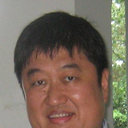[Acutely developed reversible posterior leukoencephalopathy syndrome following a prompt physical activity to avoid a traffic accident: a case report].
کلید واژه ها
خلاصه
A 40-year-old woman was diagnosed with iron deficiency anemia (hemoglobin 3.5 g/dl) induced by uterine myomas, and admitted to the Department of Gynecology of our hospital. During admission, she underwent the daily intravenous administration of saccharated ferric oxide for 3 weeks, and monthly GnRH analogue administration was started. Her hemoglobin level acutely increased to 9.3 g/dl over the next 18 days with normal blood pressure. Thirteen days after the 3rd administration of the GnRH analogue, she suddenly developed marked headache. Just before the onset, she had been driving a car, and spun the steering wheel to avoid a traffic accident on a busy street. This headache was so severe that she was brought to our hospital by ambulance. During transport to the hospital, her blood pressure was normal. Soon after arriving, she developed generalized convulsions, followed by status epilepticus. A brain MRI showed vasogenic edema in the posterior and parietal cortices including white matter bilaterally, and minimum subarachnoid hemorrhage was indicated in the bilateral frontal lobe and right temporal lobe. CSF analysis was unremarkable. Anticonvulsants, one course of steroid pulse therapy and glycerol were started, and status epilepticus disappeared on the same day. Abnormal areas on MRI decreased gradually. However, hyperintensity on T1- and FLAIR images remained in the right parietal lobe and bilateral occipital lobe white matter at 15 months after the onset Judging from the clinical and radiological findings, this patient was diagnosed as reversible posterior leukoencephalopathy syndrome (RPLS) accompanied with subarachnoid hemorrhage. This case suggests that an unexpected prompt physical activity or astonishment would induce RPLS in a patient treated with GnRH analogue.


